Modern Art + Design presents a historical collection of lighting by Hans Bergström
Hans Bergström The Master of Light
– a historical collection of lighting from ateljé Lyktan
When the young artist Hans Bergström decided in the 1930s to focus his artistic practice on creating modern lighting in Sweden, his decision would revolutionise Swedish lamp manufacturing and the attitude towards electric lighting for the decades that followed. Hans Bergström’s trajectory stretches from 1930s Functionalism to the ‘Swedish Modern’ of the 1940s. When plastics were introduced in the 1950s he was one of the first to implement the new material in modern lighting.
At the Stockholm Exhibition of 1930 and despite being only 20 years old and not yet having graduated from the industrial design program at the Technical School (what is now Konstfack) in Stockholm, he confidently introduced himself to the metalware manufacturer Ystad-Metall as a designer. Two years later Bergström designed a chandelier for the Iggesund Church as his final project and in doing so staked out his path as the first Swedish architectural lighting designer. Bergström and his wife Verna started the studio Ateljé Lyktan in Helsingborg in 1934. A Functionalist ceramic lamp, made especially for the café Kafferepet, went on to be enormously popular in the city and became a minor commercial success. Just such a lamp is included in the present collection.

› A ceiling lamp, model ”27”, ateljé Lyktan, Sweden 1940-50s.
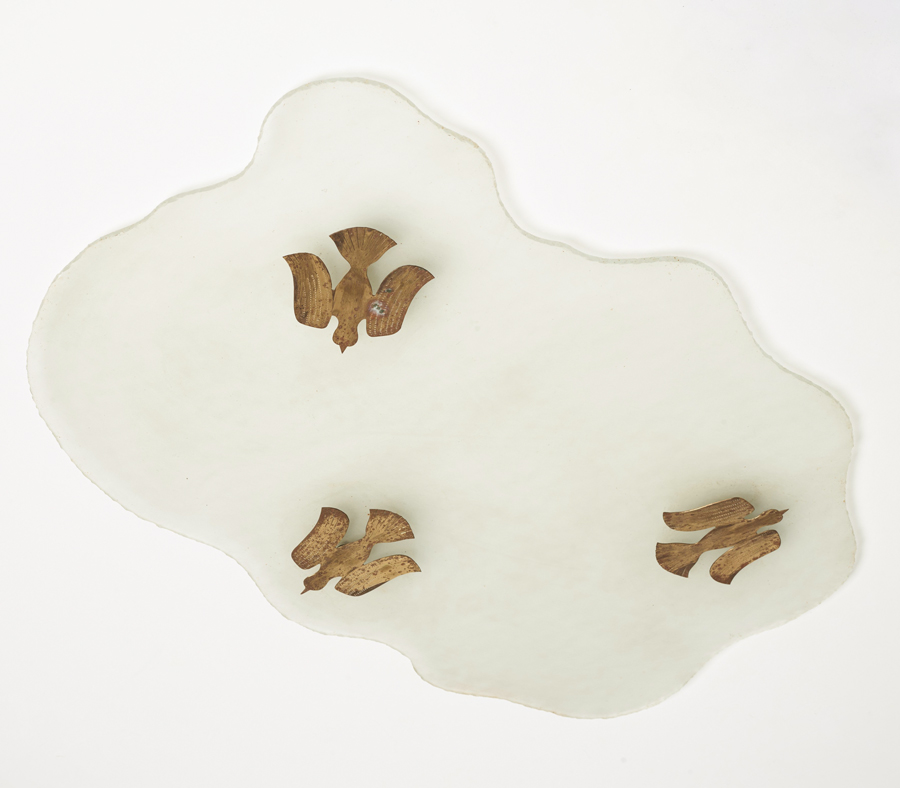
›The table lamp that became immensely popular – made explicitly for café Kafferepet. ateljé Lyktan, Helsingborg 1930s.

› Ceiling lamp, model ”153/6”, ateljé Lyktan, Åhus, 1940-50-tal.
Shortly after the Second World War Bergström began to regularly participate in exhibitions and by the mid-forties, his work had, through the agency of the Swedish Society of Crafts and Design, already reached as widely as the USA and South Africa. Ateljé Lyktan, which Hans and Verna established, later moved to Åhus and became an important craft industry in the area. They employed forty or so seamstresses and metal workers, some of whom had come from Ystad-Metall, where Bergström had previously acquired his knowledge of the craft.
At the same time the couple also established a combined design shop and showroom in Kristianstad, where the world could see what they were doing.
As the forties came to an end the light from Ateljé Lyktan shone more brightly than ever before. In connection with an exhibition in 1949 at Bonnier’s new department store in New York, Bergström’s light fittings attracted attention for their sophisticated elegance. When in 1952 his creations were exhibited at the Röhsska Museum in Gothenburg, it was, as far as we know, the first time lampshades made from spun plastic were shown publicly. A chandelier with six understated perpendicular pendants sprayed with plastic and hanging together in a cluster left the audiences amazed, as described in an article from September 1952 in the newspaper Göteborgs Handels och Sjöfartstidning. The light fitting in question, marked as ‘model 153’, is also included in the auction’s collection. Worth noting in this context is also the 1954 Tenth Trienniale in Milan, where Bergström was awarded a gold medal for one of his lamps in acrylic glass. We find two of these lights in the collection, in the form of a subtle table lamp in acrylic glass, ‘model 748’.
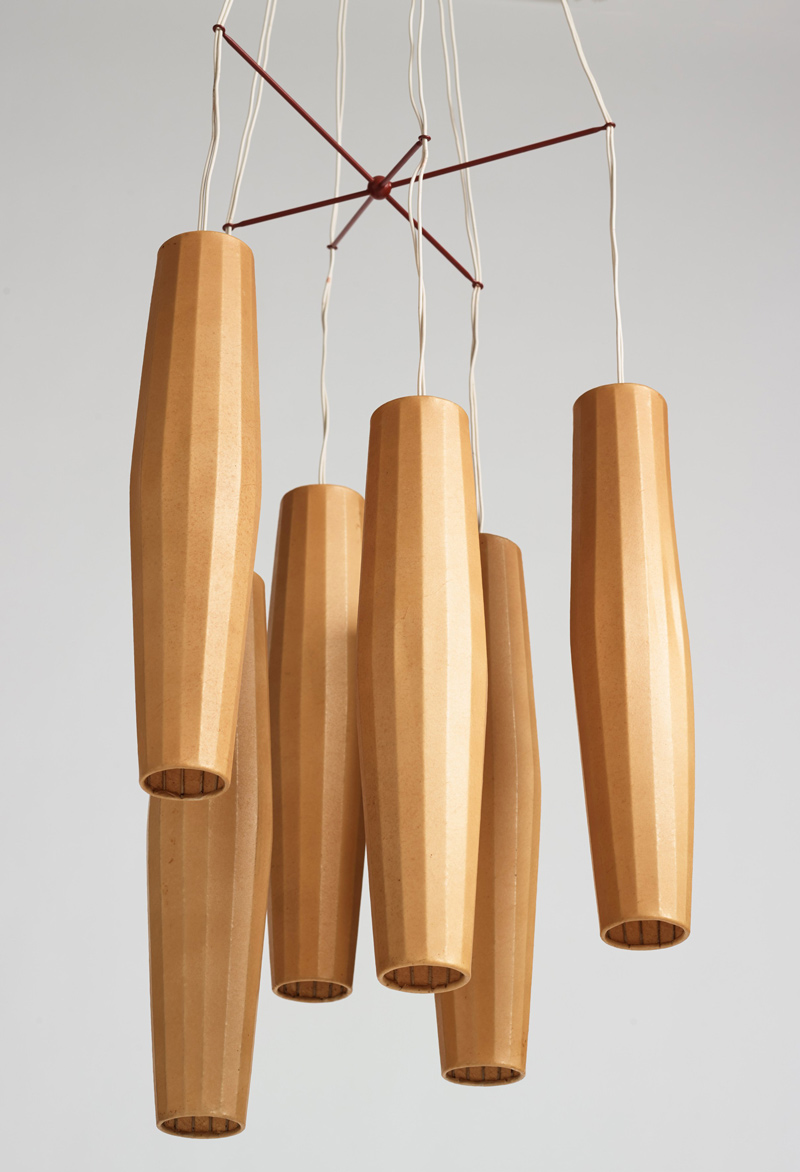
› Portrait of Hans Bergström
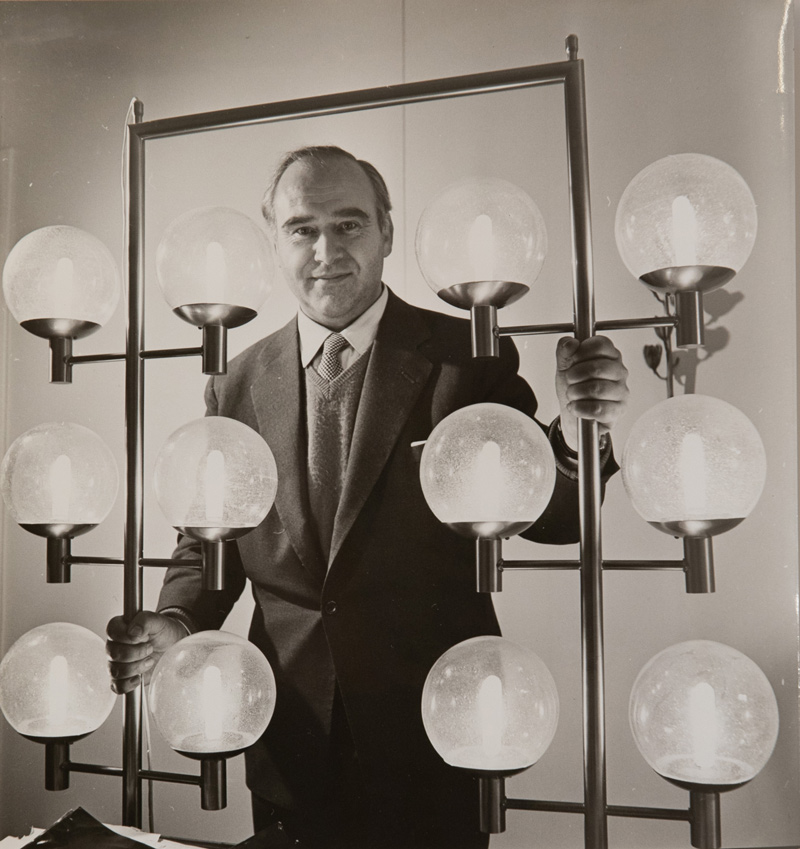
› The two subtle table lamps which Bergström got praised for at the Triennale in Milan in 1954. ”Model 748”, studio Lyktan, Åhus, 1940s-50s.

It is through these achievements, the prominent exhibitions, and his pioneering lighting projects that Bergström gradually became a more widely known name outside of Sweden. He was no longer just a designer – he was a lighting architect. The period between the 1940s and up until the latter part of the 1950s confirmed him as one of the best when it came to architectural lighting, and underlined ateljé Lyktan as a Nordic lighting company at the forefront of innovation. When the Helsingborg Exhibition of 1955 opened its doors, Hans Bergström played a central role amongst the period’s most influential architects.
The architect’s journey is one from strict Functionalism to decorative light fittings and eventually to the discovery of revolutionary new materials, such as acrylic glass and sprayed plastic, which liberated Bergström as a sculptor and offered him completely new possibilities.
From notices, old magazines, stories told by his family and close friends, as well as descriptions by past workers at Ateljé Lyktan, an image emerges of a man who loved gardens, nature, antiquity, Italy and who allowed all these impressions to repeatedly take shape in the form of chased brass leaves and brass birds on caged lampshades, chandeliers and ceiling lights. The lighting architect didn’t want light to be obstructed by a sombre shade, but to glimmer behind pleated chintz fabric, acrylic glass, or to filter unrestrained from a cage of golden birds in flight. As Bergström expressed it himself: “light must be white and shine freely”.
Text Johan Jansson, author of the book Ljuset ska vara vitt och lysa fritt – historien om ateljé Lyktan
Modern Art + Design: View the full catalogue
View the full collection
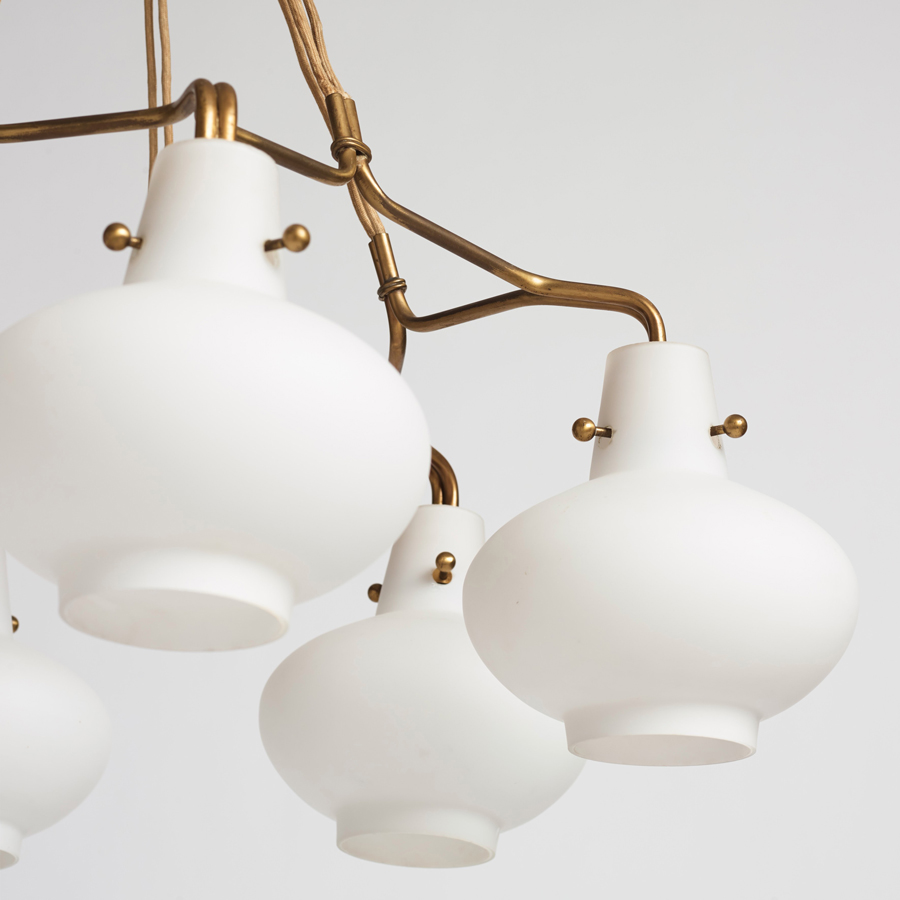
All lighting in the collection

Vasarahinta
13 000 SEK
Lähtöhinta
6 000 - 8 000 SEK

Vasarahinta
18 000 SEK
Lähtöhinta
6 000 - 8 000 SEK

Vasarahinta
28 000 SEK
Lähtöhinta
20 000 - 25 000 SEK

Vasarahinta
13 000 SEK
Lähtöhinta
10 000 - 12 000 SEK

Vasarahinta
18 000 SEK
Lähtöhinta
12 000 - 15 000 SEK

Vasarahinta
17 000 SEK
Lähtöhinta
6 000 - 8 000 SEK

Vasarahinta
17 000 SEK
Lähtöhinta
12 000 - 15 000 SEK

Vasarahinta
18 000 SEK
Lähtöhinta
6 000 - 8 000 SEK

Vasarahinta
85 000 SEK
Lähtöhinta
40 000 - 50 000 SEK

Vasarahinta
16 000 SEK
Lähtöhinta
15 000 - 20 000 SEK

Vasarahinta
110 000 SEK
Lähtöhinta
30 000 - 40 000 SEK

Vasarahinta
50 000 SEK
Lähtöhinta
30 000 - 40 000 SEK

Vasarahinta
36 000 SEK
Lähtöhinta
12 000 - 15 000 SEK

Vasarahinta
10 000 SEK
Lähtöhinta
12 000 - 15 000 SEK

Vasarahinta
9 000 SEK
Lähtöhinta
12 000 - 15 000 SEK

Vasarahinta
15 000 SEK
Lähtöhinta
12 000 - 15 000 SEK

Vasarahinta
34 000 SEK
Lähtöhinta
12 000 - 15 000 SEK

Vasarahinta
70 000 SEK
Lähtöhinta
20 000 - 25 000 SEK

Vasarahinta
70 000 SEK
Lähtöhinta
20 000 - 25 000 SEK

Vasarahinta
22 000 SEK
Lähtöhinta
15 000 - 20 000 SEK

Vasarahinta
500 000 SEK
Lähtöhinta
25 000 - 30 000 SEK

Vasarahinta
14 000 SEK
Lähtöhinta
20 000 - 25 000 SEK

Vasarahinta
13 000 SEK
Lähtöhinta
8 000 - 10 000 SEK

Vasarahinta
32 000 SEK
Lähtöhinta
10 000 - 12 000 SEK

Vasarahinta
65 000 SEK
Lähtöhinta
20 000 - 30 000 SEK

Vasarahinta
28 000 SEK
Lähtöhinta
15 000 - 20 000 SEK

Vasarahinta
28 000 SEK
Lähtöhinta
15 000 - 20 000 SEK

Vasarahinta
19 000 SEK
Lähtöhinta
12 000 - 15 000 SEK

Vasarahinta
6 500 SEK
Lähtöhinta
8 000 - 10 000 SEK

Vasarahinta
3 000 SEK
Lähtöhinta
6 000 - 8 000 SEK

Vasarahinta
14 000 SEK
Lähtöhinta
15 000 - 20 000 SEK
Condition report & requests Contact category specialist

Tukholma
Eva Seeman
Johtava asiantuntija, moderni ja nykyaikainen taidekäsityö & design
+46 (0)708 92 19 69
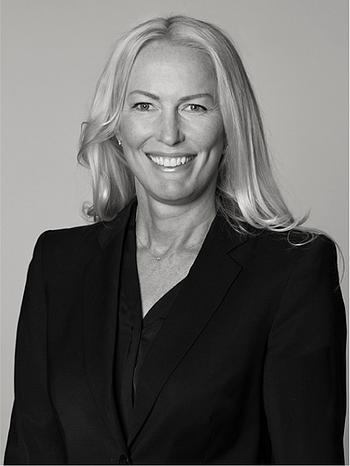
Tukholma
Camilla Behrer
Johtaja, Design and Moderni taidekäsityö
+46 (0)708 92 19 77























